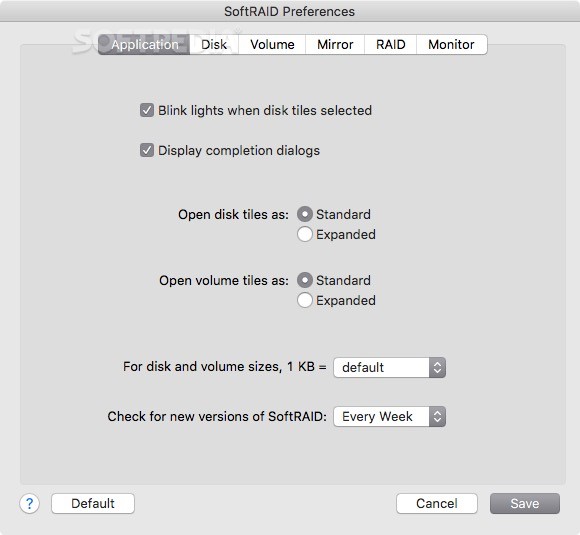
All parts of the SoftRAID product now run as 64-bit code. We encourage Administrators to create scripts to alert them to potential issues with their disks before a failure occurs. SoftRAID 4.3 command line functions have also been improved. SoftRAID 4.3 improves support for SSDs (Solid State Disks) when TRIM is enabled. With this release, SoftRAID mirror volumes are now much more tolerant of disks which fail right in the middle of a read or write operation. SoftRAID 4.3 improves the robustness of mirror volumes. Users who have started up their Macs using SoftRAID RAID volumes can now apply Firmware Updates to their Macs.

SoftRAID 4.3 adds support for Macintosh Firmware Updates. Mdadm can be installed using yum or apt-get package.SoftRAID 4.3 is fully compatible with Mac OS 10.8 Mountain Lion. Mdadm will create, edit and monitor Linux RAID devices. Linux Create Software RAID 1 (Mirror) Array: System must have RAID adapter for the purpose of adding more disk It should have minimum two disks, more disks can also be added. RAID 1 has mirror with high performance and the reading is better than writing. Every disk in the mirror has another data copy and when one disk fails, data can be retrieved from the other disk. RAID mirror is extracting mirror of the same data written in two drives. To hold a file system, RAID devices combine many disk drives and make a single device. RAID 1 is a method of grouping the drives that are located individually for forming a big drive known as RAID set. Always write operations will be slow as it is done only once.

If the disk is operational, the RAID array can be operated.

The data can be read from both the disk at the same time, when the data is operational and the operations are made fast. Applications which need high availability and high performance use RAID 1. RAID 1 is disk mirroring is reconstruction of data to two or more disks. Linux is an operating system which is based on UNIX and it is an open source OS.


 0 kommentar(er)
0 kommentar(er)
